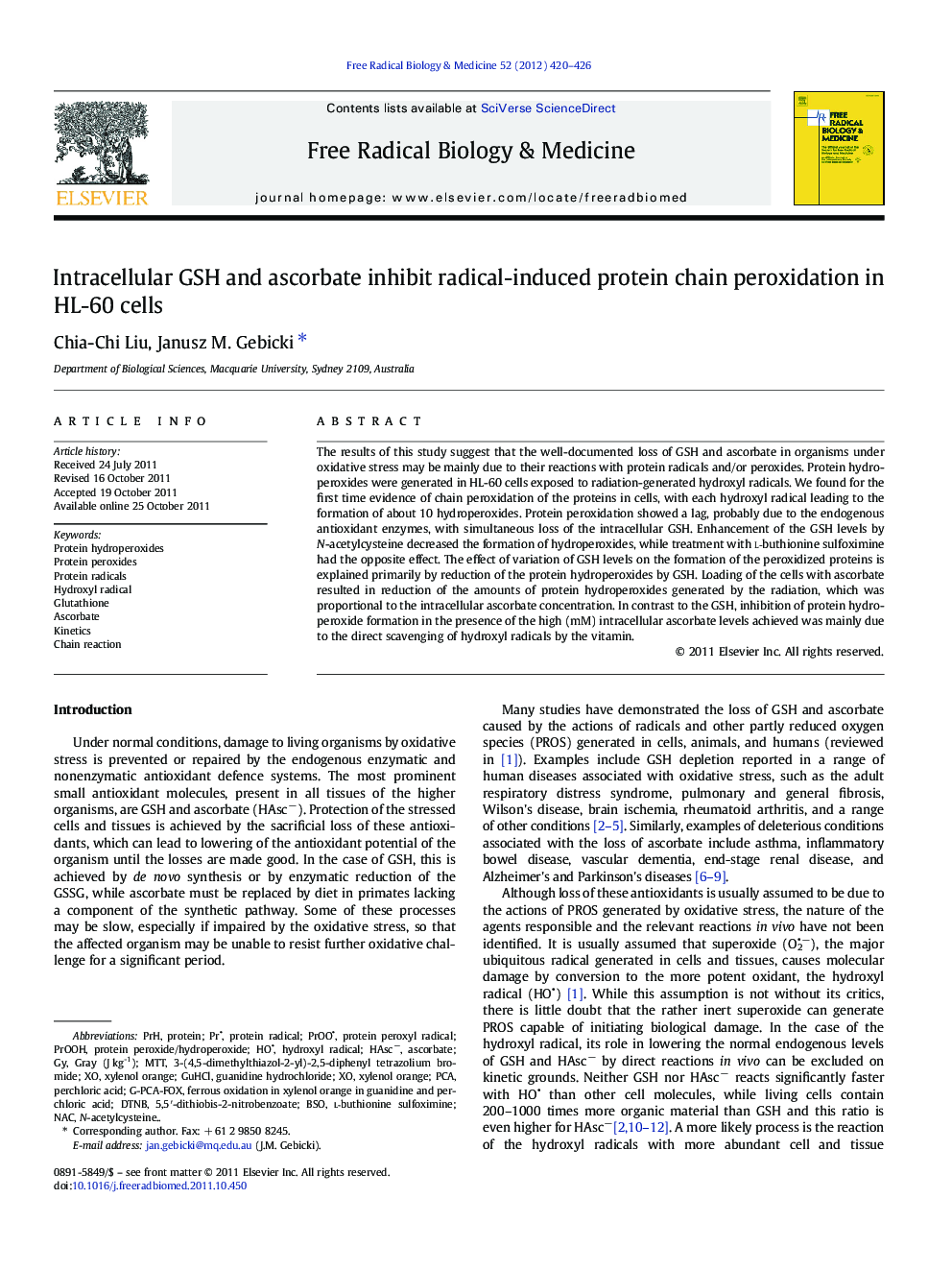| Article ID | Journal | Published Year | Pages | File Type |
|---|---|---|---|---|
| 1908943 | Free Radical Biology and Medicine | 2012 | 7 Pages |
The results of this study suggest that the well-documented loss of GSH and ascorbate in organisms under oxidative stress may be mainly due to their reactions with protein radicals and/or peroxides. Protein hydroperoxides were generated in HL-60 cells exposed to radiation-generated hydroxyl radicals. We found for the first time evidence of chain peroxidation of the proteins in cells, with each hydroxyl radical leading to the formation of about 10 hydroperoxides. Protein peroxidation showed a lag, probably due to the endogenous antioxidant enzymes, with simultaneous loss of the intracellular GSH. Enhancement of the GSH levels by N-acetylcysteine decreased the formation of hydroperoxides, while treatment with l-buthionine sulfoximine had the opposite effect. The effect of variation of GSH levels on the formation of the peroxidized proteins is explained primarily by reduction of the protein hydroperoxides by GSH. Loading of the cells with ascorbate resulted in reduction of the amounts of protein hydroperoxides generated by the radiation, which was proportional to the intracellular ascorbate concentration. In contrast to the GSH, inhibition of protein hydroperoxide formation in the presence of the high (mM) intracellular ascorbate levels achieved was mainly due to the direct scavenging of hydroxyl radicals by the vitamin.
Graphical abstractFigure optionsDownload full-size imageDownload high-quality image (75 K)Download as PowerPoint slide
